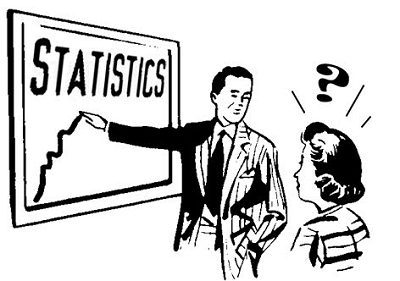With brick-and-mortar retailers declaring bankruptcy at an alarming pace in 2017, some industry observers have been questioning one of retail’s most commonly used measuring sticks: same-store sales. This metric, comparing sales at stores open for a given period of time (generally a year), is frequently used — some would say over-used — by Wall Street as a handy indicator of a retailer’s performance, direction and future prospects.
But with shopper journeys now encompassing mobile, online, store visits and social networks, it’s not clear whether same-store sales still serve as an accurate barometer. In a Forbes article, Steve Dennis wrote that the metric’s “usefulness is rapidly fading, if not bordering on irrelevance.” He noted that while traditional retailers have been struggling to grow physical store sales in the face of “the significant and inexorable shift to online shopping,” stores themselves are still an integral part of the omnichannel experience.
“Physical stores are critical drivers of e-Commerce success — and vice versa,” Dennis wrote. “For most retailers, a brick-and-mortar location sits at the heart of a brand’s ecosystem for a given trade area. Any retailer with a decent level of channel integration employs stores to acquire new customers, to serve buy online, pick up in-store orders (and returns) and to convert shoppers that start their shopping online but need to touch, feel or try on a product before buying. The decision of ‘digitally native’ brands like Amazon, Bonobos, Warby Parker and others to open stores underscores this fact.”
Advertisement
Industry Experts Debate Same-Store Sales’ Validity
A recent RetailWire article explored whether the same-store sales metric should give way to more inclusive measurements such as “same trade area,” which accounts for all sales, regardless of purchase channel, that are made within the influence area of a given store. Some of the comments from the RetailWire Brain Trust are excerpted below.
Dick Seesel, Principal, Retailing in Focus
The Forbes article brings up a key point about the impact of omnichannel on same-store sales metrics. If a customer uses BOPIS (buy online, pick up in-store), does the sales credit belong to the company’s e-Commerce site or to the store that fulfilled the order? Is it a fair metric when store A might have the merchandise in stock and location B might not? And, bottom line, does it or should it matter to a true omnichannel retailer?
There is another issue casting a shadow on the validity of same-store sales: The increasing speed of store closures. At one point “comp sales” was a valuable tool as a lot of retailers were in a go-go expansion mode, but just the opposite is the case now. As companies close overlapping locations, the remaining stores may benefit from a spike in same-store sales without actually reflecting on the health of the business.
Dave Wendland, VP, Hamacher Resource Group
If you haven’t yet noticed, we have been embroiled in a seismic paradigm shift at retail. Thus clinging to “establishment” metrics and patting ourselves on our backs if same-store sales are declining at a lower rate than the market average is simply fuzzy math. Shoppers have changed the way they shop. Competitors do not look like what they once did. And brand loyalty isn’t what it used to be. These are among the factors that strongly point to the need for a re-imagined (timely and relevant) measurement. Kurt Salmon has it right: “Retailers need to measure overall cross-channel brand performance.” The new measurement must take into consideration brand interactions, conversion rates, content stickiness, referrals, reviews and much more.
Mark Ryski, Founder, CEO and Author, HeadCount Corp.
I do not believe that same-store sales or the other traditional metrics are obsolete, however there’s no question that they have become nuanced and require more interpretation. My concern about using a vague notion like “same trade area” is that it’s open to interpretation. Who decides what area is to be considered same-trade?
Phil Masiello, Founder and CEO, Hound Dog Digital Agency
At the end of the day, there are only a few measurements that matter to determine the overall health of a brand. Do you have more new customers this year vs. last year in total? Is your customer retention rate higher or lower than last year and are your overall sales up? Same-store sales is still a worthwhile metric. However, if you are truly an omnichannel brand, then you can measure your total customers, total sales and retention rate very easily. If they are all falling, then changing the metric you measure won’t help you fix the problem.
Tom Redd, Global VP, Strategic Communications, SAP Global Retail Business Unit
Same-store sales was a metric when our great industry only had the store channel to use as one of the business measures on Wall Street. Well heck, retail changed — NO WAY, REALLY? — and now so must the measures. Channel activity measures will evolve — especially as retailers learn to leverage the much larger key indicators relating to sales and customer buying processes. Same-store comps is DOA. Wall Street people are not as fast as our retail industry. They will learn.
Nikki Baird, Managing Partner, RSR Research
I like the idea of “same trading area.” I’ve also talked to investment analysts who prefer to look at comparable store traffic rather than comp store sales. It makes sense — if the store is serving a greater purpose than just transactions, then you should have the traffic to go along with it. Reporting on sales or even conversion rate hides underlying issues. If conversion rates are steady but traffic is falling, not only are sales likely going down as a result, but you have fewer “at bat” opportunities with customers because they’re just not coming in the door.
Doug Garnett, Founder and CEO, Atomic Direct
Too often businesses forget that metrics are merely proxies and not full indicators of business success. Store comps should get far less emphasis in the future because they are a less and less accurate proxy for business health. Unfortunately, that means weaning Wall Street from their reliance on same-store sales. We should also remember W. Edwards Deming’s caution — that over-reliance on metrics leads to perfectly-managed businesses that fail.









